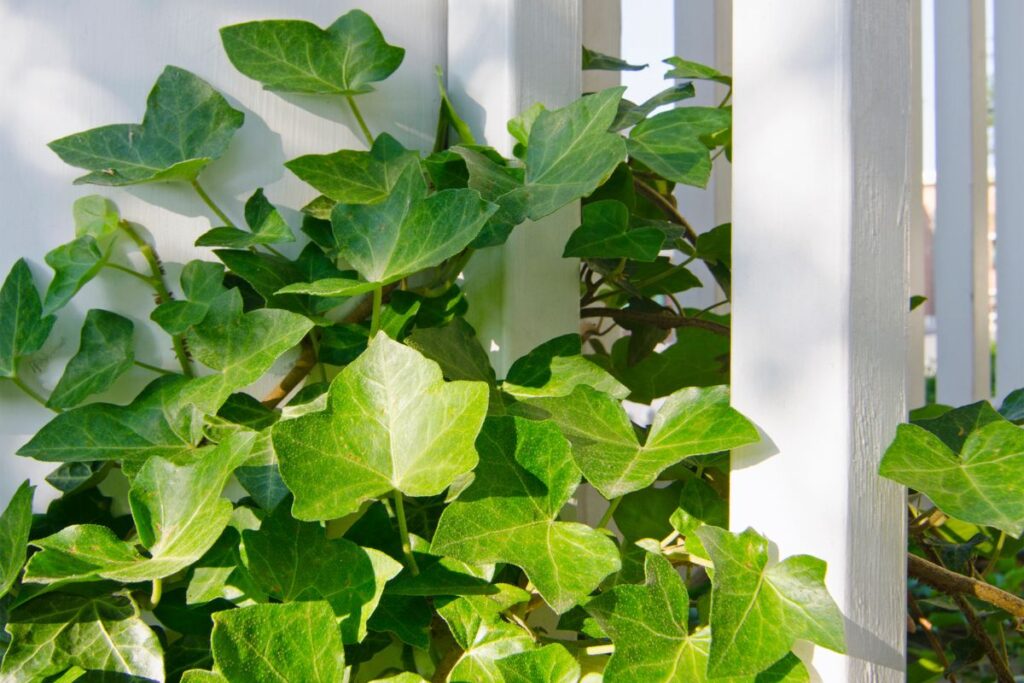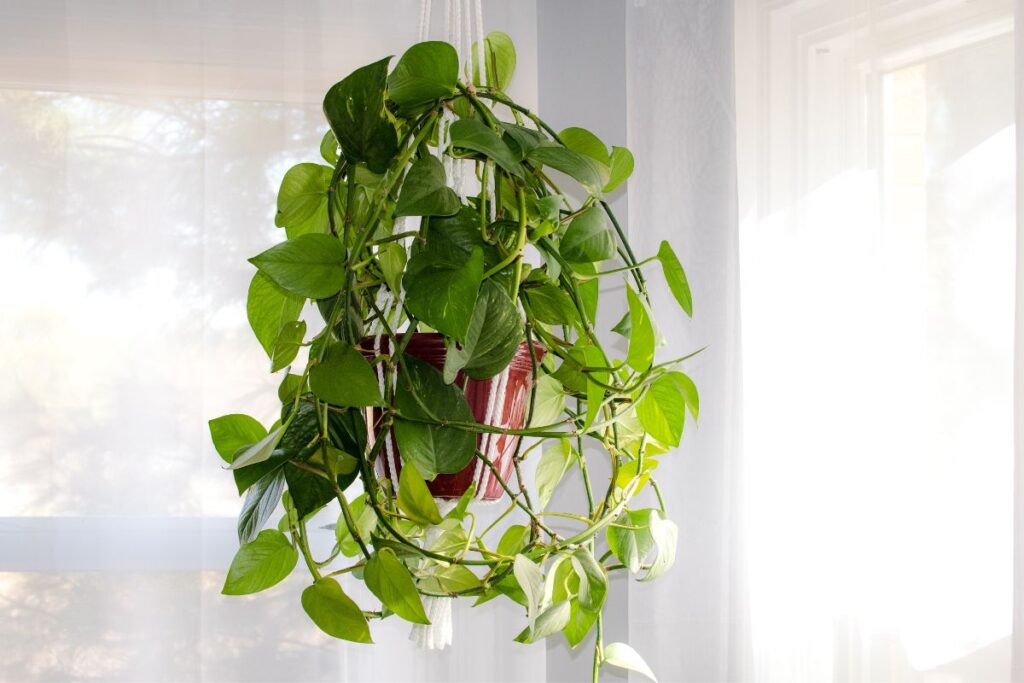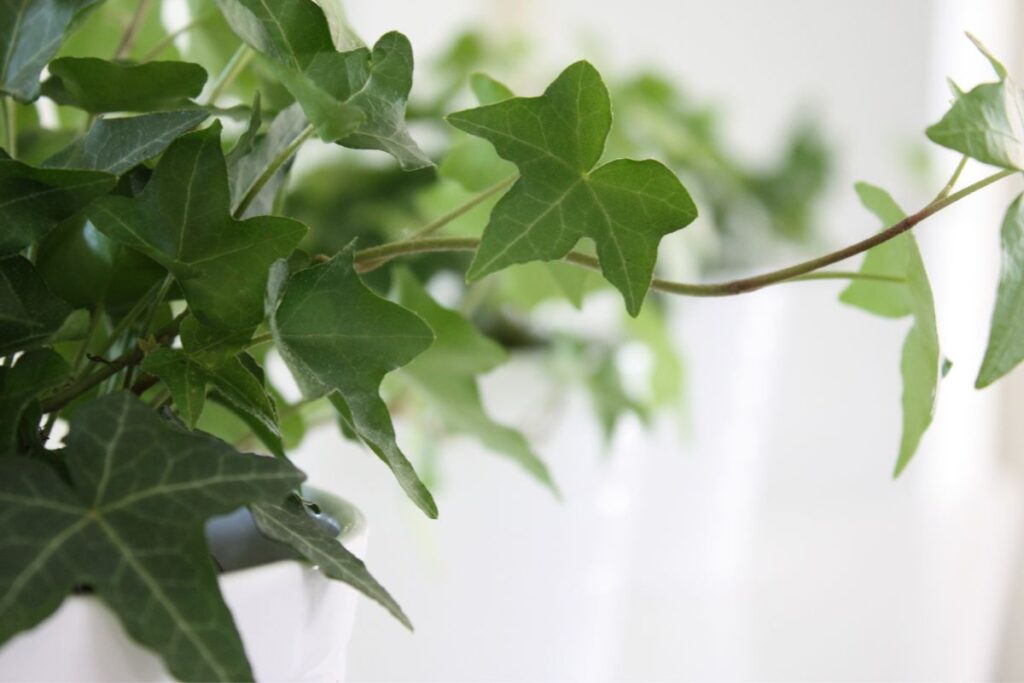Looking to speed up the growth of your ivy plants? In this article, we’ll show you how to make your ivy grow faster with some simple techniques. By following these tips, you can encourage healthy and vigorous growth in your indoor or outdoor ivy plants. Whether you’re a seasoned plant lover or just starting out, these methods will help you achieve the lush and thriving ivy garden you desire. Let’s get started!

Contents
How Fast Does Ivy Grow?
Ivy doesn’t grow very fast, typically only about 6 to 9 inches per year. However, there are several factors that can influence the growth rate of ivy. Understanding these factors and the different stages of ivy growth can help you promote faster growth.
How To Make Ivy Grow Faster
If you want to make your ivy grow faster, there are several key points to consider. First, ensure that your ivy plant is receiving enough light, as this is crucial for its growth. Secondly, make sure you are watering your ivy properly and consistently, allowing the soil to dry out slightly between waterings. Lastly, choose the right potting soil for your ivy and maintain a suitable temperature and humidity level in its environment.
Light
Proper lighting can help ivy grow faster. When it comes to lighting for ivy growth, there are a few key considerations. First, you need to decide between natural and artificial lighting. Natural light is always the best option as it provides the perfect balance of wavelengths for plant growth. However, if you have limited access to natural light, you can supplement with artificial lights like fluorescent or LED bulbs.
Different types of ivy have varying light requirements. Some prefer bright indirect light, while others can tolerate low-light conditions. Research your specific ivy type to ensure optimal light exposure.
For indoor ivy plants, it’s crucial to provide enough light since they don’t get as much sunlight as outdoor plants. Consider placing them near windows or using grow lights specifically designed for plants.
On the other hand, if you want to promote faster growth by tricking the plant into thinking it’s getting less light than it actually is, you can use techniques like shading or covering parts of the plant with a cloth.
Remember that proper lighting is essential for healthy and fast-growing ivy!

Watering
Watering is an important factor to consider for the healthy growth of ivy. Proper hydration is essential to keep your ivy thriving. The key here is finding the right balance. Ivy plants prefer moist soil but not soggy conditions, as overwatering can lead to root rot and other problems. To ensure proper watering, make sure you are using the right techniques. Water deeply, allowing the water to penetrate the roots fully. Avoid shallow watering that only wets the surface.
It’s also crucial to establish a watering schedule that suits your specific ivy plant’s moisture requirements. Check regularly if it needs water by inserting your finger into the soil up to your knuckle – if it feels dry, it’s time to water. Lastly, be on the lookout for signs of overwatering such as yellowing leaves or wilting stems – adjust your watering accordingly for a healthier ivy plant.
Potting Soil
Potting soil plays a crucial role in the healthy growth of ivy. When choosing potting soil for your ivy, it’s important to consider the benefits it offers. Good quality potting soil provides essential nutrients that nourish your plant and promote faster growth. The composition of the soil should be well-balanced, with organic matter like compost or peat moss mixed in. This ensures that your ivy receives the necessary nutrients for its development.
Another important aspect is moisture retention. Potting soil with good moisture retention properties helps keep your ivy hydrated between waterings, preventing it from drying out or becoming waterlogged. This is crucial for maintaining optimal growing conditions.
Furthermore, proper drainage is essential to prevent waterlogging and root rot. Make sure the potting soil you use allows excess water to drain away easily, keeping your ivy’s roots healthy and promoting faster growth.
By using high-quality potting soil that provides essential nutrients, retains moisture effectively, and ensures proper drainage, you can create an ideal environment for your ivy to thrive safely and grow faster.
Temperature & Humidity
To ensure the healthy growth of your ivy, it’s important to consider the temperature and humidity levels in its environment. Climate control plays a crucial role in providing optimal conditions for your ivy’s growth. Maintaining a stable temperature between 65-75°F (18-24°C) is ideal, as extreme heat or cold can negatively impact its development.
Additionally, high humidity levels ranging from 40-60% are essential to create favorable growth factors for your plant. You can achieve this by using a humidifier or placing a tray filled with water near the ivy. Environmental factors such as drafts should be avoided as they can disrupt the growth process. Regularly monitoring the temperature and humidity levels will ensure that your ivy receives proper care, resulting in faster growth and healthier foliage.
Fertilizer and Pest Control
Fertilizer and pest control are important aspects of maintaining the health and vitality of your ivy plant. When it comes to fertilizers, organic options are the safest choice for both you and your plant. Avoid synthetic fertilizers that may contain harmful chemicals. Instead, opt for homemade fertilizers using natural ingredients like compost or manure. These provide essential nutrients without posing any risks to your health or the environment.
When it comes to pest control, natural methods are preferable. Companion planting is a great way to deter pests without resorting to harmful pesticides. For example, planting marigolds alongside your ivy can repel aphids and other insects. Additionally, biological pest control involves introducing beneficial insects that prey on pests into your garden.
Remember, safety should always be a priority when caring for your ivy plant. By using organic fertilizers and natural pest control methods, you can ensure a healthy and thriving ivy while keeping yourself safe from harmful chemicals.

Pruning
When caring for your ivy plant, it’s important to regularly prune the leaves and stems to promote healthy growth. Pruning has several benefits for your ivy. It helps remove dead or diseased parts of the plant, allowing new growth to thrive. Additionally, pruning encourages better air circulation and sunlight penetration, which are essential for your ivy’s overall health. But when should you prune your ivy?
The best time is during the spring or early summer when the plant is actively growing. Use sharp pruning shears or scissors to make clean cuts at a 45-degree angle just above a leaf node. This will ensure proper healing and prevent any damage to the remaining stem. Avoid common pruning mistakes such as over-pruning or cutting too close to the base of the plant. By following these pruning techniques and using the right tools, you can help your ivy grow faster and stronger while maintaining its safety.
Growing Ivy Indoors Vs Outdoors
Growing ivy indoors or outdoors can impact the rate at which it grows. If you choose to grow ivy indoors, there are several benefits to consider. First, indoor ivy is protected from harsh weather conditions that can damage its leaves and slow down growth. Second, indoor environments provide a more controlled climate, ensuring consistent temperature and humidity levels for optimal growth. To successfully grow ivy indoors, make sure to place it near a window where it can receive ample sunlight. Additionally, regularly misting the leaves will help maintain proper moisture levels.
On the other hand, growing ivy outdoors comes with its own set of challenges. Factors like extreme temperatures and pests can affect its growth negatively. To care for outdoor ivy effectively, ensure that you choose a variety that is suited for outdoor conditions and has good resistance against pests and diseases.
In conclusion, whether you choose to grow ivy indoors or outdoors depends on your preferences and the specific conditions in your environment. Consider the benefits of indoor growth and the challenges of outdoor care when making your decision.
Types of Ivy
If you’re looking to add some greenery to your space, there are various types of ivy that you can consider. Common ivy varieties include English Ivy, Algerian Ivy, and Persian Ivy. These ivies are known for their beautiful foliage and ability to grow in different conditions. If you’re interested in a climbing ivy species, Boston Ivy and Virginia Creeper are great options as they can cover walls and fences with ease.
For ground cover, Creeping Charlie and Japanese Spurge are popular choices. If you want ivy for hanging baskets, try Swedish Ivy or Golden Pothos which have trailing stems perfect for cascading down. Lastly, if you prefer low-maintenance options, consider Devil’s Ivy or Grape Ivy as they require less care and attention.
Conclusion
So there you have it – a few tips and tricks on how to make your ivy grow faster. By providing the right conditions, such as adequate sunlight, water, and nutrients, you can encourage your ivy to thrive and grow at a quicker pace. Whether you choose to grow your ivy indoors or outdoors, remember to regularly trim and prune it to promote new growth. With a little patience and care, you’ll soon have lush, vibrant ivy that will add beauty to any space. Happy gardening!
